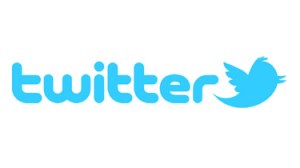
In an attempt to regain control of its ecosystem, Twitter announced this weekend that third-party app developers should not produce new Twitter clients that replicate Twitter’s functionality, reports Mashable. The stern warning is certain to shake-up the growing community of companies that make a living off the micro-blogging site, and could have consequences for Twitter’s 200 million users.
According to an API announcement from Twitter platform chief Ryan Sarver, developers should not create any new apps “that mimic or reproduce the mainstream Twitter consumer client experience.” Clients like TweetDeck, Echofon, Twidroyd or UberTwitter will be allowed to continue to function, Sarver said. But those and other similar apps will be held to “higher standards” than before. Twitter will reject any new apps that violate these rules.
The reason for the new policy — or, at least, a clarification of policy — is to create a streamlined experience for Twitter users who are thrown-off by third-party apps that are “inconsistent” with the official Twitter experience.
“For example, people get confused by websites or clients that display tweets in a way that doesn’t follow our design guidelines,” says Sarver, “or when services put their own verbs on tweets instead of the ones used on Twitter…Users should be able to view, retweet, and reply to @nytimes’ tweets the same way; see the same profile information about @whitehouse; and be able to join in the discussion around the same trending topics as everyone else across Twitter.”
Sarver outlines the new rules for devs to create a “consistent user experience” as such:
Twitter is a network, and its network effects are driven by users seeing and contributing to the network’s conversations. We need to ensure users can interact with Twitter the same way everywhere. Specifically:
– The mainstream consumer client experience. Twitter will provide the primary mainstream consumer client experience on phones, computers, and other devices by which millions of people access Twitter content (tweets, trends, profiles, etc.), and send tweets. If there are too many ways to use Twitter that are inconsistent with one another, we risk diffusing the user experience. In addition, a number of client applications have repeatedly violated Twitter’s Terms of Service, including our user privacy policy. This demonstrates the risks associated with outsourcing the Twitter user experience to third parties. Twitter has to revoke literally hundreds of API tokens / apps a week as part of our trust and safety efforts, in order to protect the user experience on our platform.
– Display of tweets in 3rd-party services. We need to ensure that tweets, and tweet actions, are rendered in a consistent way so that people have the same experience with tweets no matter where they are. For example, some developers display “comment”, “like”, or other terms with tweets instead of “follow, favorite, retweet, reply” – thus changing the core functions of a tweet.
Third-party apps that do not step on Twitter’s toes will be allowed, Sarver said. Those include publisher tools, like Social Flow; social CRM clients, like HootSuite; and “value-added” apps, like Formspring, Foursquare, Instagram and Quora, which integrate Twitter into their service, but do not “mimic” its functionality.
According to Sarver, 90 percent of Twitter users already use official Twitter apps, so the policy changes shouldn’t affect most tweeters.
It’s unclear whether the tightening of control is a step towards Twitter’s plan for monetization,but that certainly seems like a possibility — especially with companies like Bill Gross’s UberMedia stepping on its heels.
